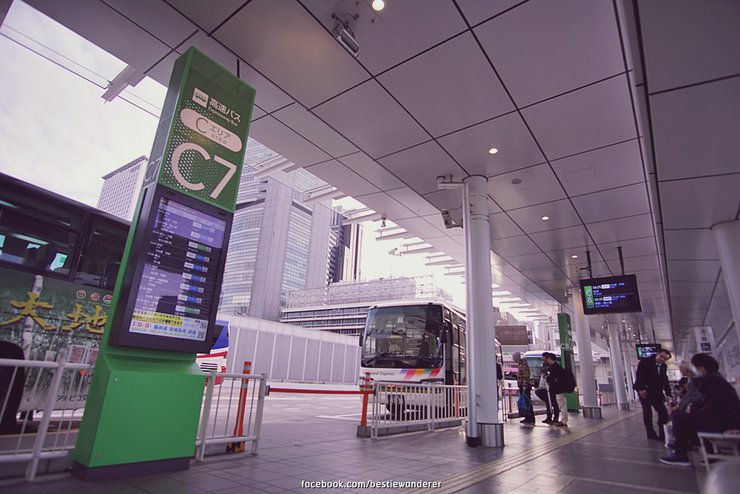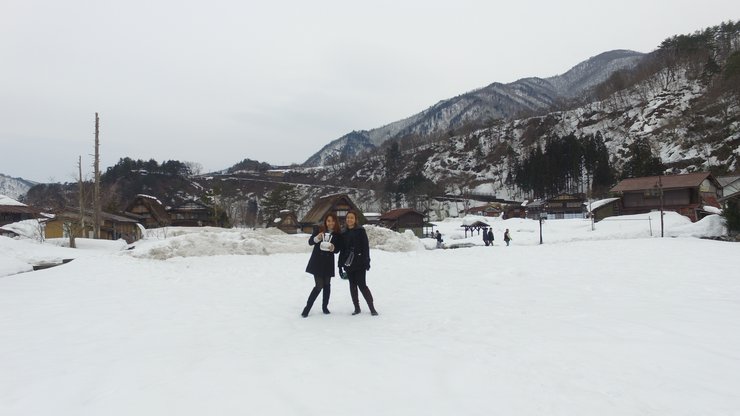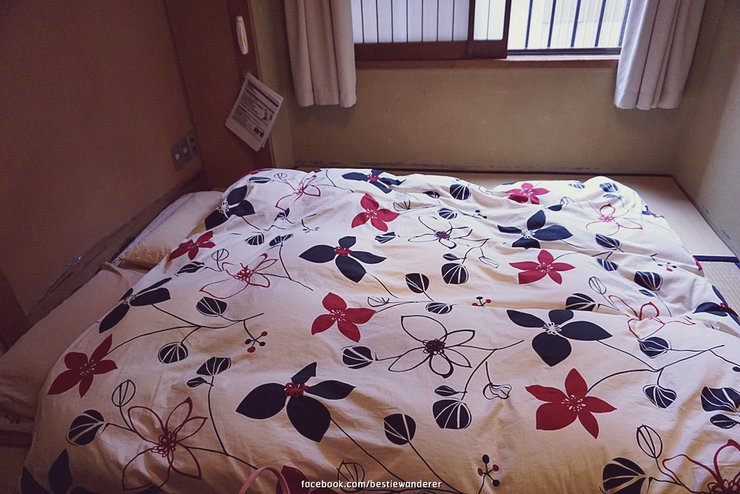This review will take you away from the hustle and bustle of Japan's big cities to explore two charming small towns that we both fell in love with.
Shirawaka-go and Takayama: A Journey Through Japan's Historic Charm
Shirakawa-go, a picturesque village nestled in the Shogawa River Valley, offers a glimpse into Japan's traditional architectural heritage. Its iconic gassho-style houses, with their steeply thatched roofs resembling praying hands, have earned the village UNESCO World Heritage status.
Takayama, a charming town nestled in the Japanese Alps, exudes an old-world charm. Its preserved Edo-era streets, lined with traditional wooden houses and shops, transport visitors back in time. Takayama is also renowned for its Hida beef, considered one of the finest in Japan. The melt-in-your-mouth tenderness of this exquisitely marbled beef is a culinary experience not to be missed.
3-Day, 2-Night Slow-Paced Itinerary: Tokyo-Takayama-Shirakawago-Osaka
This itinerary offers a relaxed pace, allowing you to experience the highlights of each destination without feeling rushed. It focuses on cultural immersion and local experiences rather than trying to see everything.
Day 1: Tokyo to Takayama
- Take the Nohi Bus from Shinjuku Expressway Bus Terminal to Takayama (17:05 departure, 22:35 arrival; JPY6,690 per person).
- Check in to your hotel, J-Hoppers Hida Takayama (JPY11,187 for 2 nights).
Day 2: Exploring Takayama
- Enjoy lunch at Kotaro Restaurant, known for its delicious Hida beef.
- Visit Takayama Jinya, a former government building with beautiful architecture.
- Stroll across the iconic Nakabashi Bridge.
- Wander through the charming Takayama Old Town, lined with traditional shops and houses.
- Explore the serene Kokubun-ji Temple.
Day 3: Takayama to Shirakawago and Osaka
- Take the Shirakawa-go Half Day Bus Tour with J-Hoppers (08:10-12:10; JPY3,900 per person).
- Depart for Osaka on the Nohi Bus (16:50 departure; JPY4,700 per person).
For a short video review of this itinerary, visit: https://pantip.com/l/https%3A%E0%B8%AF%E0%B9%91%E0%B8%AF%E0%B8%AF%E0%B9%91%E0%B8%AF%E0%B9%91www.facebook.com%E0%B8%AF%E0%B9%91%E0%B8%AFbestiewanderer

01. Travel from Tokyo to Takayama by Nohi Bus.
Traveling from Tokyo to Takayama can be done by bus or train. To avoid multiple transfers, we opted for the Nohi Bus, purchasing tickets in advance through their website (www.nouhibus.co.jp/english/). We printed the tickets at home, costing 6,690 yen per person. Boarding took place at the Shinjuku Expressway Bus Terminal, with our chosen departure time of 5:05 PM. The journey to Takayama took approximately 5 hours, arriving at 10:35 PM. Several rest stops were included along the way. The bus schedule is available on the website.
Before boarding the bus, we left our luggage at the Tourist Information Center to explore the area briefly. The Sagawa Cloak & Delivery counter offers luggage storage services (for a fee). While the station typically has lockers available, they were undergoing renovations during our visit.


The boarding area features a waiting area and a mini-mart. While there are no dedicated charging stations in this area, charging ports are available on board the bus.

02. Two-night stay at J-Hoppers Hida Takayama
After arriving in Takayama around 10:30 PM, we stopped to buy supplies before checking into our accommodation. We booked a room at J-Hoppers Hida Takayama Guesthouse directly through the hotel's website. If you plan to check in after 10 PM, you must email the hotel in advance. After 10 PM, there may not be staff available, so they will prepare a room key and provide you with the hotel's password.
We opted for a private room for two people, which cost 11,187 yen for two nights, or a little over 5,000 yen per person. Overall, we were very satisfied with the location, price, and comfortable futon mattresses. The room had a large wardrobe that could fit two 30-inch suitcases, a small table for dining, and a heater.






Each floor has shared bathrooms. Shower rooms are located in the lobby and are separated by gender. There are washing machines and hair dryers available for loan.




The common area features comfortable sofas for relaxation and reading, a fully equipped kitchen with a shared refrigerator, computer workstations for your convenience, and complimentary boot rentals for outdoor adventures.






If you are already planning to visit Shirakawa-go, we recommend purchasing a tour through the hotel. They offer a 500 yen discount for hotel guests, bringing the tour cost to 3,900 yen per person. This half-day tour allows you to choose between a morning or afternoon departure and includes round-trip transportation from Takayama to Shirakawa-go. Additionally, the tour provides transportation to the village's scenic viewpoint.

Seven is approximately 5-10 minutes away from the hotel.

The area around the hotel in early March is typically free of snowmelt, but the weather remains cold. During our visit, the temperature ranged from 5 to 10 degrees Celsius.



03. Stroll through the charming town of Takayama and savor the legendary Hida beef.
The next day after arriving, we opted to rest first, not venturing far as we were still tired from the long car ride the previous night. We decided to wake up late and take a leisurely stroll through the village. Admittedly, we had planned extensively before arriving, as this was our first trip to Japan. We had envisioned skiing, soaking in onsen, and visiting morning markets. However, the reality of the cold and fatigue made us realize that a packed schedule was not feasible. We adjusted our plans on the spot, opting for a more relaxed and less strenuous approach to avoid getting sick early in our trip.

We left our hotel around 11 am and set out to find a Hida beef restaurant. After wandering around, we stumbled upon a small Hida beef restaurant called Kotaro. It had about four tables and a bar counter with seating for five or six people. An elderly Japanese couple were working together, cooking and serving customers.
The restaurant is open in two shifts: 11:30 am - 2:00 pm and 5:00 pm - 8:30 pm.




This restaurant offers reasonable prices compared to others in the area. They also provide complimentary green tea. The menu is available below.


The first dish we ordered was grilled Hida beef on miso leaves for 2400 yen, served with soup, salad, and rice.

This set includes Hida beef sukiyaki for 1700 yen, served with rice, salad, rich and flavorful broth, and chewy noodles. It's a real treat!


To be honest, when I first read about it, I didn't believe it would be that delicious. But when I finally got to try it myself, the first bite was amazing! It was so soft and melted in my mouth. It had a unique smoothness that I can't describe. If you like meat, you absolutely have to try it!
After we finished eating, we went for a walk in Takayama. Our first stop was the red Nakabashi Bridge. We walked around, stopping at any scenic spots we found, and then continued on. The weather was nice and cool, so we could have walked all day. ^^






Along the way, we came across the Takayama Jinya. After doing some research, we found out that it was the office and residence of the governor of Hida Province for over 176 years. It houses a collection of old documents, weapons, and samurai clothing.
Takayama Jinya Admission and Hours:
Admission: 430 yen Hours: 8:45 AM - 5:00 PM
Note: The surrounding gardens and trees offer beautiful photo opportunities without an admission fee.






Near the red bridge, there are shops selling Japanese grilled rice cakes like this for 80 yen each. We tried one, and it tasted salty from the sauce and the rice cake was slightly chewy.


After a leisurely stroll, we finally arrived at Takayama's landmark, the Nakabashi Red Bridge.
The Nakabashi Red Bridge, which spans the Miyagawa River and connects to the old town, is a symbol of Takayama City. It is a 10-minute walk from JR Takayama Station. The bridge is surrounded by willow trees and cherry blossoms, creating a beautiful contrast between red and green. In spring, this area is famous for its cherry blossoms, and at night, it is particularly beautiful due to the illuminated trees.




We visited during the late winter, when the snow had melted and the flowers had not yet bloomed, giving the landscape a somewhat desolate appearance. Near the bridge, Japanese-style rickshaws were available for sightseeing tours of the city, costing around 5,000 yen.




After crossing the Red Bridge, we will encounter the Old Town zone, a must-visit for most tourists. Here, you can admire the old-style architecture and houses, shop for local souvenirs, and enjoy the numerous restaurants. Allow approximately one hour to explore this area, taking your time to stroll, browse the shops, and capture some photos.






If you visit this city, don't be surprised to see these red dolls everywhere. They are called Sarubobo, which means "monkey baby" (Saru = monkey, Bobo = baby). While the red color is the most iconic, Sarubobo dolls come in various colors, each with its own meaning. For example, gold represents wealth, pink represents love, and blue represents academic success. Today, Sarubobo dolls are popular souvenirs from Hida Village and are often used as lucky charms.



Next, we will visit the **Hida Kokubunji Temple**, whose main building is the oldest in Takayama and has been designated a cultural heritage site.





Next, we'll take you to try the **Hida Beef Takoyaki**, which is unmatched by any octopus, shrimp, or seafood! (Because we love to eat meat, haha!)
Since we've been eating as we walk, we'll just try 3 pieces for 500 yen.


Crispy on the outside, soft and fluffy on the inside, and incredibly fragrant.
P.S. Be careful when you bite, it's really hot! You might burn your mouth.

The sentence is already in English and does not require translation.
Takoyaki stall with meat filling. I apologize, I don't know the name of the shop. I stumbled upon it while walking around, and I can't read the sign.

Nearby, there was a supermarket where we were captivated by a display of strawberries. They were a deep red and looked incredibly delicious. A pack only cost 409 yen, which is just over 100 baht! We bought them all!


Next up is the Hida beef bun! It's very popular and sells out quickly, so be sure to come early. The location is... I asked the hostel and they recommended this place.



If you don't eat meat, there are other fillings available, such as pickled cucumber, red beans, or pumpkin. There is also soft-serve ice cream for sale. If you're not afraid of the cold, go for it!

The surrounding area is relatively quiet and uneventful. It is primarily residential, with a few scattered restaurants.





As we were making our way back to the hotel, we stumbled upon this area by chance. It seemed to be a hub for restaurants, bars, and the like. We passed by around 4 pm, and none of the establishments were open yet.



The nearby shops were still closed, so we bought some beers at the convenience store to kill time. Hehe, the cherry blossom can is so cute! ^^

For dinner, we decided to have Hida beef again. If you're a beef lover and visit Takayama, you must try Hida beef! It's incredibly tender and melts in your mouth. We had it every meal while we were in the city and still crave it back in Thailand. However, we found only a few restaurants importing it, and the prices are steep, around 3,000-4,000 baht per dish. In Takayama, you can enjoy it for 300-400 baht. This time, we were tired and didn't want to wander around, so we asked the hotel staff for recommendations. They suggested this restaurant, which is popular among Thai tourists. They even opened Google Maps for us, and we followed the directions. It took less than 10 minutes to reach the restaurant from J-Hoppers.

This restaurant is only open in the evenings. The interior has approximately 5 tables and a bar counter with seating for an additional 5-6 people.



The restaurant's menu is also available in English, so no worries!


This is what we ordered: Deluxe loin for 1600 yen, Loin for 950 yen, vegetable set for 600 yen, miso soup for 300 yen, rice for 150 yen, and sake for 800 yen.




The sake was so strong and harsh that we could only manage one glass. I think we made a mistake in choosing the brand. T-T
We went back to our room and passed out. We went to sleep early to prepare for our trip to Shirakawa-go the next day.

Visit Shirakawa-go, a World Heritage Site
This passage describes a visit to Shirakawa-go, a UNESCO World Heritage Site, as part of a tour booked through the J-Hoppers hotel. The tour, normally priced at 4,400 yen, is discounted to 3,900 yen for hotel guests. It includes round-trip transportation from Takayama to Shirakawa-go and a stop at a scenic viewpoint. The tour departs Takayama at 8:00 am and returns at noon.

The bus stop is located near the JR station.

The sentence is already in English and does not require translation.
Across from this souvenir shop

The road to Shirakawa-go was covered in snow, with heavy clouds overhead. Although it looked like rain, it did not end up raining.




The first stop on the tour is a scenic viewpoint where everyone takes photos. It's a must-visit spot!


The picture shows our visit to the village in early March 2017. There was still some snow on the ground, but not enough to cover the roofs of the houses. The temperature was in the single digits, and there was occasional rain and light snowfall. We spent about 15 minutes there before our guide called us back to the car to continue our journey to the village.


Here is the bus schedule for the viewpoint from Shirakawa-go village. If you are not on a tour and do not want to walk up, you can take the bus for 200 yen per person per trip.

The thick snow near the viewpoint is evident when compared to the size of the people in the picture.



Upon arrival, the tour group will disperse, allowing you to explore independently without a designated guide. You will have two hours to explore at your own pace before returning to the vehicle at the designated meeting time.



The sign is also in Thai, which shows how many Thai people visit here. Haha.

Note: The original text is empty, so the translation is also empty.
Smoking is prohibited within the village due to the high risk of thatched roofs catching fire.


Let's take a cute photo with the manhole cover first.

The image depicts a suspension bridge that leads to a village. While the bridge may sway slightly, it appears sturdy and safe for crossing.


Upon crossing the bridge into the village, we simply strolled around, taking in the sights, snapping photos, and purchasing souvenirs. We did not visit the museum or dine at any restaurants. In our opinion, if this is all you want to do, a half-day tour is more than sufficient. The tour guide provided informative commentary throughout the journey, highlighting points of interest and suggesting places to visit. The guide was delightful, to say the least.




Shops will sell handmade items and small, cute souvenirs.


The sentence is already in English and does not require translation.



There is also a mailbox for those who want to send postcards as souvenirs.

The snow is gradually melting, with barely any left on the rooftops. Although it's cold, we're having a blast taking pictures with the snow. It's not often we get to experience weather like this, so we're making the most of it!







To conclude our trip with this photo, for those who are planning a trip to Japan, we would like you to consider including the charming small towns of Shirakawa-go and Takayama in your itinerary. You must experience them for yourself, and you may fall in love with these two towns just like we did.

Thank you to everyone who read this to the end. We look forward to seeing you again on our next journey together soon.
Follow other reviews and watch travel VDOs from two best friends on the channels below:
Facebook: https://www.facebook.com/bestiewanderer/
The sentence is already in English and does not require translation.
Bestie Wanderer
Tuesday, October 8, 2024 11:16 AM















